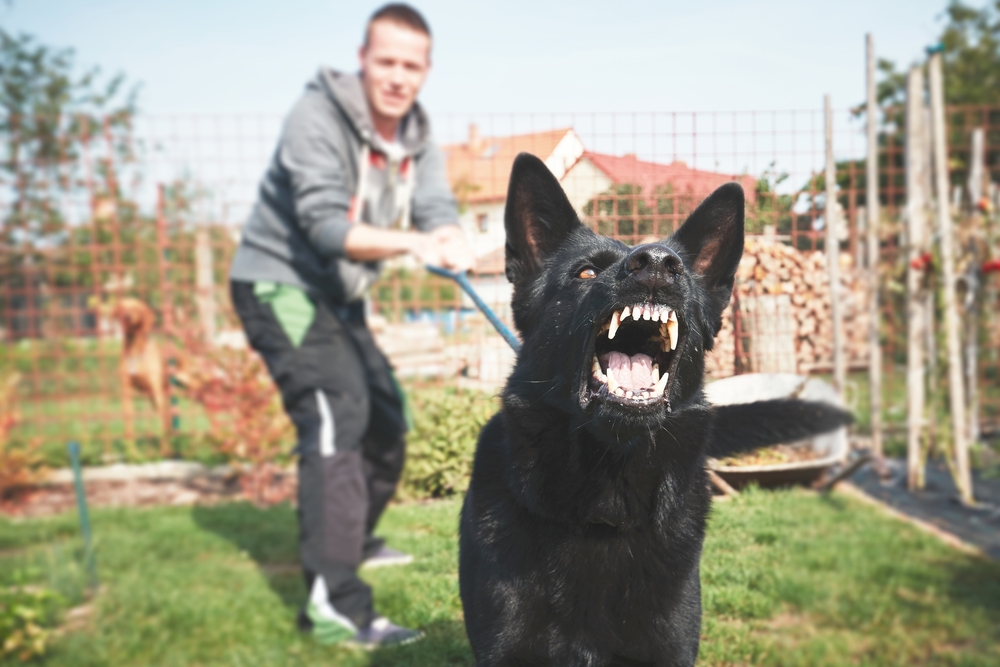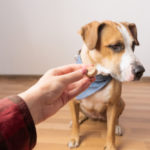If your canine is prone to growling at strangers, it can be a frustrating experience. Especially when introducing them to potential new lovers or business associates!
There are also those strangers in the street who take the utmost offence to your dog’s growling insisting that “all dog’s love them” and therefore, there must be something ‘wrong’ with yours.
The truth is, growling is an innate instinct that doesn’t necessarily indicate that there is anything untoward with your beloved pooch.

To the contrary, most dogs growl because they feel protective of you and thus, it derives from a place of loyalty and love.
However, it is important for your dog to understand healthy boundaries so they do not become stressed or overly defensive in triggering situations. Read on to find several crucial steps that will assist you in training your dog not to growl at strangers.
Observe And Identify Your Dog’s Triggers
A trigger is something that causes your dog to react from a place of stress. These reactions are often unpleasant and undesirable to humans.
In this instance, it is the presence or actions of someone who is unfamiliar to the animal that causes this reactionary growling.
Try to identify, specifically, what it is about that individual or situation that causes the reaction in your dog. Is their body language overwhelming?
Are they a particular height or size? Are they a specific gender?
As well as identifying body language that may be triggering, it is also important to note the location that the behavior occurs in: is there a certain park where a previous traumatic event may have taken place in?
Is there a specific room in the house that your dog is anxious to enter?
Identifying these specific details increases your chances of being able to retrain your canine to feel more comfortable in these scenarios without feeling the need to be ‘on guard’ and defensive.
Note Down A Description Of Each Trigger
The more that you can pinpoint details about your dog’s triggers, the better. For instance, if they are growling at a stranger in an open space how close does the stranger have to be before the growling starts?
Does the growling start when the individual is moving towards or away from the animal? The latter question will help you to identify whether the growling comes from a place of defence or a fear of abandonment.
Making these observations will enable you to notice patterns in your canine’s behavior that you may have not noticed before.
If your dog growls at everyone and it is hard to identify these patterns, then analyzing the stranger’s proximity to your dog will be the best place to start.
Have A Structured Plan For Behavior Modification
If you have identified a specific location where the behavior occurs then you can implement a management approach to your dog’s growling by simply avoiding the area concerned.
This is probably the easier route but if your desire is to train your dog to not growl at all then behavior modification is the way forwards.
Choosing a management approach will undoubtedly be the more convenient approach to preventing your dog’s growling.
Some examples of management include: telling a stranger not to stretch out their hand towards your dog, crossing the road to avoid any oncoming pedestrians, changing your usual walking route or shutting your dog in one area of the house when the electrician arrives.
However, this doesn’t actually deal with the problem itself and acts more like a sticking plaster over the original wound, eventually it will grow septic and evolve into something that is more uncontrollable.
If you are time-limited then management may be the only option, especially if you are able to walk your dog around an empty field or a place where it is less likely to encounter strangers.
But modification is always the stronger, long-term solution.
Behavior modification still requires an element of management, this is because in order to change and ultimately, stop your dog’s growling, you need to prevent them from habitually practicing the growl.
A dog would not growl if it wasn’t an effective tool for communicating. The individual usually responds by backing away and so your pet will have learnt that growling is a wholly effective means of defence and prevention.
The difficulty with this is that it is hard to train a dog (or a human) out of a habit that works for them. The reinforcement of the individual backing away and leaving your dog alone is enough to have cemented the effectiveness into your dog’s mind.
Therefore, the only way to counter this is to change your dog’s mind about strangers, offering them positive encouragement by using food or other treats when they encounter someone new so that they learn to reassociate the stranger with something positive.
How To Re-associate The Stranger With Positivity
The ‘look at that’ game, created by the eminent dog trainer, Leslie McDevitt, will assist you in changing your dog’s reaction to strangers. There are several steps involved in this game.
Step one: As soon as the dog notices the new individual, click and feed them a treat. Repeat this step at least fifteen times.
Step two: Ensure that the click is delayed until the dog looks back at you. Only feed them the treat when their full attention is directed at you as opposed to the stranger. Again, repeat this fifteen times.
Step three: Make the game as mobile and as fun as possible, positive tonality as opposed to using a harsh tone will cement the notion that strangers can be associated with joy.
Step four: Some dog’s may be so anxious that they ignore the treats completely.
In this instance, notice your proximity to the trigger itself and alter your position until your dog feels comfortable enough to accept the treat.
Over time, you will be able to move gradually closer to the trigger itself until it becomes less intimidating for your dog to accept the treat.
Treat And Retreat
Some of you may have attempted to encourage strangers to give your dog’s treats as a means of retraining them and stopping their growling. However, this can often backfire putting the stranger and your dog in unnecessary danger.
This is because the dog is placed into a stressful predicament, they want the treat but are fearful of the stranger and this confusion can actually lead to stronger reactivity within your dog as their senses may become overwhelmed.
An alternative solution is to have the stranger throw the treat away from the dog, asking them to avoid direct eye contact with your dog.
Ensure that the treat is thrown behind your dog so that your canine is able to back away from the individual and will therefore feel more comfortable in their company as their request for distance has been respected.
Once your dog has become more comfortable and familiar with the individual, they can then alternate between throwing the treat behind your dog and directly in front of them.
This technique will gradually build confidence as they move closer to the new individual and learn to trust them more.
In conclusion, a combination of management and behavior modification techniques will ensure that your dog moves away from their defensive growling mechanism and learns to associate strangers and new individuals with positivity as opposed to danger.
Loosened body language, patience and treat-giving techniques will help to retrain your beloved pet into showing their soft bellies to strangers in no time at all.
- 8 Signs That Your Dog Is In Heat - November 8, 2022
- Why Is My Dog Whining Whilst Carrying A Toy In Their Mouth? - August 17, 2022
- Reasons Why Your Dog’s Poop Is White And What To Do About It - August 17, 2022









